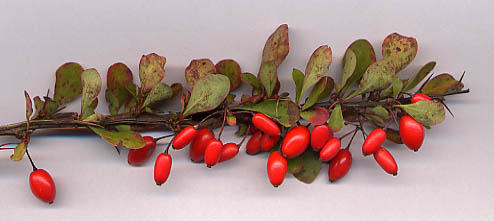
Contents
Uses
Barberry is used in food and drink products including juice, jam, and jelly. It’s root bark contains berberine, which is used to treat a variety of infections including ear, eye, mouth, throat, staph, strep, yeast, and bladder infections.
Benefits
The barberry plant contains alkaloids that have been found to have the following beneficial properties:
- antibacterial
- antifungal
- anti-inflammatory
- antioxidant
- antidiarrheal
Cautions
Barberry may not be beneficial to individuals with hypersensitivity to M. aquifolium.
Barberry may cause itching, redness, or burning when used topically by individuals with hypersensitivity.
Pregnant or lactating females should avoid barberry use.
Barberry may be poisonous in large quantities. Symptoms of poisoning are lethargy, stupor, daze, diarrhea, vomiting, and nephritis.
Other Names
Berberis vulgaris, Mahonia aquifolium, Oregon grape, Oregon barberry, Oregon grapehoilly, trailing mahonia, berberis, jaundice berry, woodsour, sowberry, Pepperidge bush, sourspine
References
Sources:
- https://www.drugs.com/npp/barberry.html
- http://www.anniesremedy.com/herb_detail253.php
